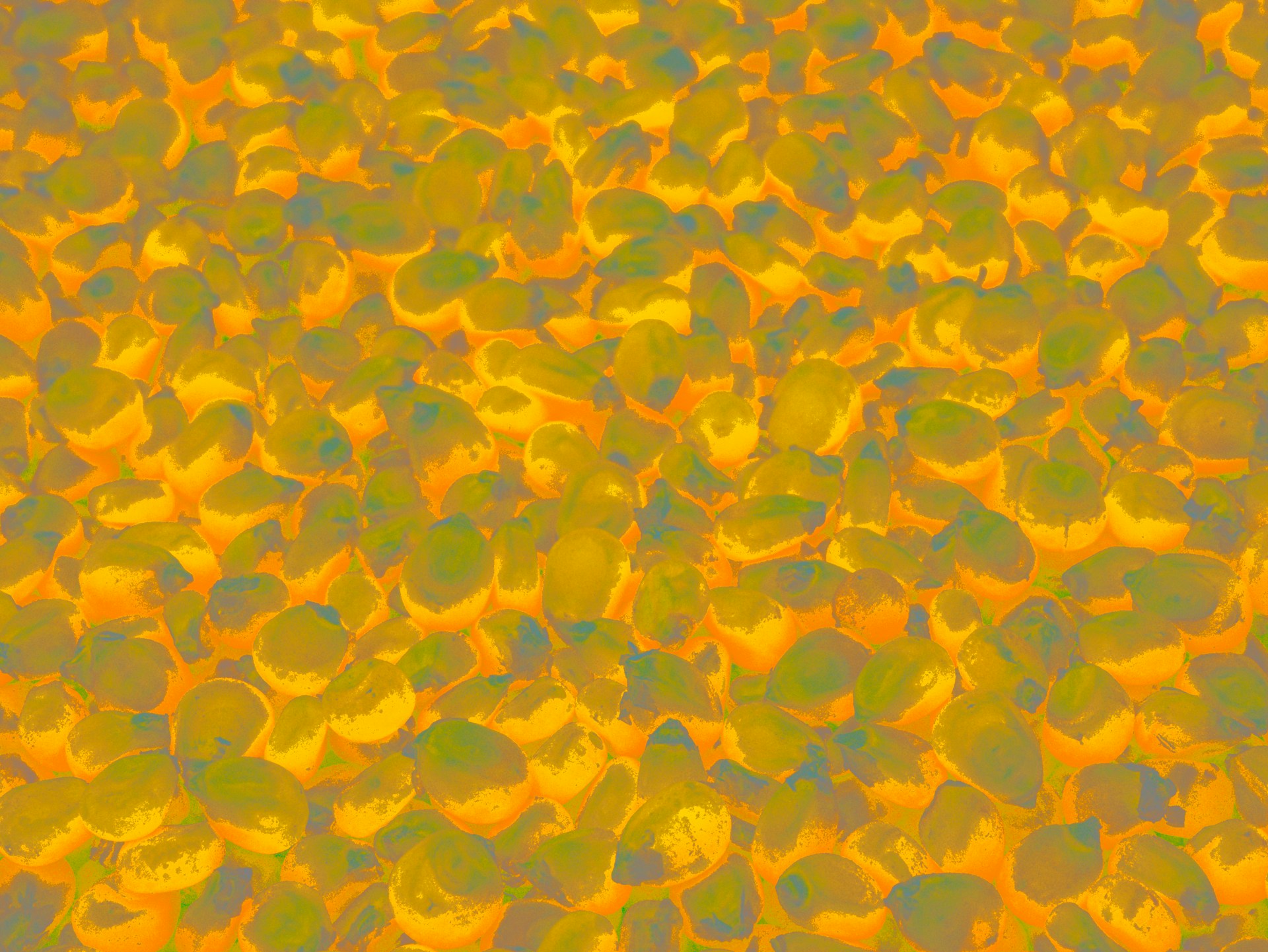Sustenance
In his 2023 exhibition A Lot of People, the Argentina-born Thai artist Rirkrit Tiravanija welcomed visitors into a spacious hall where Thai green curry was prepared, presented, and eaten. As with many of his works, Tiravanija demanded not detached observation or astonished admiration, but rather embodied presence and participatory community—pointing to how sustenance, when deliberately conjured and collectively taken, remixes high culture and everyday experience.
Tiravanija, whom Art Review listed as the world’s second most important art figure last year, helped initiate the movement of “relational aesthetics,” which shifts focus from commodified and exchangeable objets d’art to art that galvanizes an open and inclusively communal interaction, one built on collaborations and rituals like cooking, eating, and communicating. Such participatory activities aim to include and integrate multiple communities, no matter how ostensibly unequal and/or unlikely.
UCHRI, working with the broader UC Humanities Network of humanities institutes and centers, has chosen as its 2025-26 theme “sustenance.” This theme highlights thinking against the traditional grain of culture, not least to foster inclusive artistic and critical practices forging and fortifying new communities. In Marcel Proust’s madeleine-mediated memory, the bare essence of sustenance conveys the depths of irreparable loss and abiding trauma. Zoe Leonard’s Strange Fruit stitched together pieces of fruit strewn across the ground to memorialize loss associated with the AIDS epidemic, its title referencing Billie Holiday’s song based, in turn, on an anti-lynching poem by Ukrainian Jewish immigrant Abel Meeropol. Félix González-Torres’s “Untitled” (portrait of Ross in L.A.) also deploys food—candy piled to the weight of an average human male—to commemorate the artist’s partner shortly after he passed away from the same disease. González-Torres’s piece was originally shown at the Luhring Augustine Hetzler gallery in Los Angeles, but a recent installation of the work at the Smithsonian excised the piece’s references to homosexuality or AIDS, underscoring the intersection of art, food, and contemporary politics.
If Tiravanija’s, Leonard’s, and González-Torres’s works show how sustenance has helped rethink contemporary art, political philosopher Jean-Jacques Rousseau, in his 1754-1755 Discourse on the Origin and Basis of Inequality (the “Second Discourse”), also centered sustenance in his depiction of a “state of nature” transmogrifying into social struggle and inequality. Sustenance can forge new communities but can also reveal the rifts and rivalries among them, as well as the struggle with nature more generally. In fact, a second strand of Tiravanija’s 2023 show points to a further indispensable dimension of sustenance: The remnants of this repast—the detritus of dirty dishes and used chopsticks, for example—become part of the show and the artwork, emphasizing the environmental consequences of any consumption. Sustenance is closely linked to sustainability, not least through their shared Latin roots. Given the past year and our contentious present—with both wildfires and politics searing across California—the sustainability of our natural and human-made worlds has loomed large and will continue to complicate and to challenge.
Sustenance as material and metaphor will be the focus of UCHRI and its collaborations with the UC Humanities Network, guiding events, programming, and UCHRI’s regranting. We invite proposals that address the following questions, and more.
- What kinds of sustenance are key to life in our state and in our world generally? How does a focus on sustenance constitute different ways of knowing and being in the world, including tacit know-how, Indigenous stewardship, and the many forms of caregiving and kinkeeping often performed by women around the world?
- How has sustenance—including the communities and economies around it—helped shape the state of California? From the enormous agricultural industry to the innovations of “California cuisine” with its integration—and gentrification—of food cultures far and wide, sustenance has been a central aspect of our state and its history.
- What kind of sustenance is indispensable not only in a biological, but also in social, cultural, and psychological senses? What other kinds of sustenance could and should figure in our thinking and in our imaginations? What are the cultural, social, and political implications of pursuing sustenance?
- How does sustenance, in its many forms, remain sustainable? How do the current environmental circumstances intensify the links between sustenance and sustainability? How does sustenance illuminate the environmental challenges facing our local, state, and global communities?
- How is sustenance allocated? How does access to sustenance work, or not, and in whose interests? With what relevant histories of struggle? And with what sometimes tragic outcomes, including famine, food insecurity, and chronic disease?
- How does a humanistic, artistic, or qualitative social scientific approach to sustenance illuminate our conventional understandings of foodways?
- How might sustenance cut across different historical periods, styles, scales, constituencies, and temporalities? How might it become an axis and/or register of our perspectives on the world?
- What kind of sustenance will the university and education in general require in these challenging times?
UCHRI looks forward to exploring these issues and others with colleagues and students in the UC system in 2025-26. Explore our open calls and apply by January 19, 2026.
Events & Resources
UC Los Angeles |
Tuesday, October 14, 2025, 9:30 am-7 pm: Community Food Justice Conference
Location: UCLA Royce Hall, Room 314
UC Riverside |
Friday, February 13, 2026: Sustenance: 2026 UC Graduate Student Virtual Conference — Proposals due by December 19, 2025
Location: Zoom

